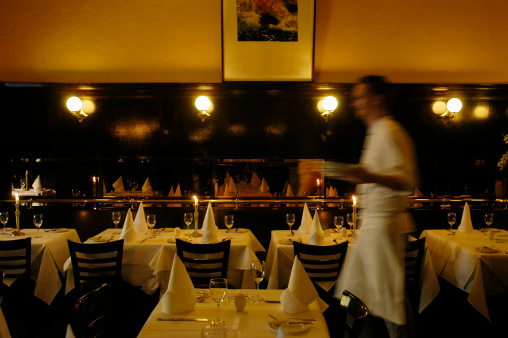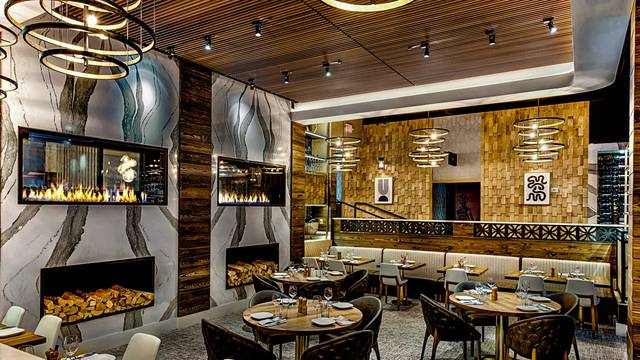Romantic Restaurants Islamabad: Suitable Dining Locations for Pairs
Romantic Restaurants Islamabad: Suitable Dining Locations for Pairs
Blog Article
Savor Authentic Asian Cuisine With a Pan-Asian Twist for a Cooking Adventure
Getting started on a cooking journey via genuine Eastern cuisine, boosted with a Pan-Asian twist, supplies an one-of-a-kind opportunity to check out the rich tapestry of tastes that define the area's diverse cooking customs. As you ponder these tempting meals, think about the cultural stories and historic influences that shape them, each bite supplying a tale waiting to be found. Fine dining experience Islamabad.

Discovering Pan-Asian Flavors
In the world of global gastronomy, Pan-Asian cuisine attracts attention for its exceptional variety and the harmonious interplay of tastes from numerous Eastern cultures. This culinary method celebrates the abundant customs and unique components located throughout the continent, creating a tapestry of preferences that is both interesting and enjoyable. Key to Pan-Asian food is its ability to stabilize contrasting flavors-- wonderful, salty, spicy, and sour-- while highlighting the quality and quality of each active ingredient.
From the umami-rich soy sauce of Japan to the intense chili peppers of Thailand, Pan-Asian cuisine uses a considerable scheme of flavors. These aspects are typically integrated in inventive ways, improving recipes with layers of complexity. As an example, making use of great smelling natural herbs such as lemongrass and cilantro, usual in Vietnamese and Thai cuisine, includes a revitalizing illumination to recipes, while the unification of coconut milk provides a luscious, abundant structure.
The focus on fresh fruit and vegetables and aromatic flavors makes sure that each meal is not only a banquet for the taste yet also for the senses. Pan-Asian cuisine invites restaurants to start a culinary journey, exploring the large and varied landscapes of Oriental gastronomy with every bite.
Combination Meals to Try
While Pan-Asian cuisine is commemorated for its traditional flavors, the modern cooking landscape is significantly accepting blend recipes that blend these timeless elements with impacts from other areas. This ingenious method not just honors the rich heritage of Oriental cookeries yet likewise introduces unique taste experiences that attract modern tastes buds.
A prime instance of such a fusion recipe is the Korean-Mexican taco, where marinaded bulgogi beef is wrapped in a warm tortilla, topped with kimchi and a zesty gochujang-infused salsa. This combination weds the strong, mouthwatering tastes of Korea with the lively, fresh aspects of Mexican food. Similarly, sushi burritos have actually obtained appeal, amalgamating the delicate virtuosity of Japanese sushi with the passionate, hand-held ease of a burrito, frequently including fusion active ingredients like tempura shrimp and avocado with a drizzle of wasabi mayo.
An additional notable dish is Thai curry ramen, which infuses the creamy, aromatic flavors of Thai curry into the soothing brew of standard Japanese ramen, creating a harmonious mix that entices the detects. These blend meals expand beyond plain novelty; they stand for a cooking dialogue between cultures, encouraging expedition and technology worldwide of Pan-Asian food.
Necessary Active Ingredients and Spices
To absolutely value Pan-Asian food, one must comprehend the necessary active ingredients and flavors that develop its structure. This diverse culinary design draws from an abundant tapestry of Oriental practices, using a harmonious blend of structures and tastes.
Fragrant elements are pivotal, with lemongrass, ginger, and garlic being common across various Pan-Asian recipes. These ingredients offer a fragrant base that boosts the intricacy of tastes. Flavors such as celebrity anise, cardamom, and cinnamon present heat and personality, echoing impacts from regions like China and India.

Food Preparation Methods and Tips
Grasping the art sushi thai of Pan-Asian food calls for knowledge with its unique cooking techniques, each adding to the vibrant tapestry of tastes this culinary tradition is commemorated for. Central to these techniques is the stir-fry, a quick cooking technique that protects the nutritional integrity and dazzling colors of components. Utilizing a wok, the stir-fry method permits also warm distribution, necessary for attaining the characteristic texture my link and flavor equilibrium of Pan-Asian recipes.
One more fundamental strategy is steaming, particularly common in Chinese cuisine. This gentle method preserves the natural tastes and nutrients of active ingredients, making it ideal for seafood and veggies. Dumplings, a precious staple, typically benefit from steaming, causing soft, succulent textures.
Grilling, also indispensable, passes on great smoky midsts to recipes such as Korean bulgogi or Japanese yakitori (Chinese food Islamabad). This method often includes marinading active ingredients, allowing tastes to penetrate deeply prior to cooking over an open flame or hot plate
Lastly, understanding the art of stabilizing tastes-- pleasant, sour, salty, bitter, and umami-- is important. Appropriately layering these components can raise a meal from average to extraordinary, providing a facility and satisfying culinary experience that symbolizes the essence of Pan-Asian food.
Eating Experiences Worldwide
Around the world, Pan-Asian food offers an unmatched dining experience, commemorated for its abundant tapestry of flavors and lively discussions. This culinary sensation has transcended cultural boundaries, catching the hearts and tastes buds of food lovers worldwide. In multicultural cities fresh York, London, and Sydney, Pan-Asian restaurants act as fusions where cooking traditions from Thailand, Japan, China, and past merge, supplying diners with a diverse mix of recipes that highlight the area's diversity.
The worldwide appeal of Pan-Asian food hinges on its capacity to use both credibility and development. Chefs skillfully marry traditional ingredients such as lemongrass, soy sauce, and miso with contemporary strategies, leading to dishes that are both refreshingly new and familiar. This combination allows restaurants to get started on a cooking trip that respects heritage while accepting modernity.
Furthermore, eating experiences are boosted with attentively developed atmospheres that mirror the values of Pan-Asian aesthetic appeals. From minimalist Japanese-inspired insides to lively Thai-themed rooms, each restaurant uses an unique atmosphere that matches the cooking offerings. Consequently, customers read this are not simply taking in a dish yet partaking in a social experience, making Pan-Asian eating a really worldwide phenomenon.
Final Thought
The exploration of Pan-Asian food supplies a profound understanding of the intricate interaction of tastes and culinary practices throughout Asia. By embracing blend dishes such as Thai curry ramen and sushi burritos, the cooking journey not only highlights the adaptability of traditional components but additionally showcases ingenious modern-day techniques. This gastronomic journey, enhanced by cooking approaches and crucial seasonings, offers an one-of-a-kind possibility to value the cultural diversity and cooking artistry that specify Pan-Asian food on an international scale.
Getting started on a culinary journey through genuine Eastern food, enhanced with a Pan-Asian twist, supplies a distinct chance to explore the abundant tapestry of flavors that specify the area's diverse cooking practices.In the realm of worldwide gastronomy, Pan-Asian food stands out for its exceptional variety and the harmonious interaction of tastes from numerous Eastern societies. Key to Pan-Asian food is its capability to stabilize different tastes-- wonderful, salted, spicy, and sour-- while highlighting the quality and quality of each component.

Report this page